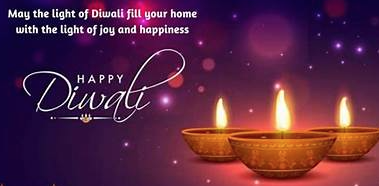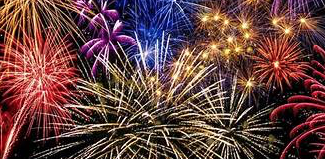
Diwali (also called Divali or Deepavali) is a “festival of lights” that celebrates the triumph of light over dark and good over evil, and the blessings of victory, freedom, and enlightenment. Though technically religious, it’s also become a cultural event in North America that is celebrated with sweets and special foods.
Coinciding with the Hindu New Year, Diwali occurs annually in autumn, during the Hindu month of Kartik. Which begins around mid-October and ends in mid-November. Specifically, Diwali occurs on the darkest day of the lunar month, which is the day of the new Moon.
Who celebrates Diwali?
Hindus, Sikhs and Jains celebrate the holiday.
Hindus celebrate the legend of the return of the Hindu god Rama and his wife, Sita, to their northern India kingdom of Ayodhya. The legend says Rama and Sita were exiled for 14 years during which Rama defeated the demon king Ravanna. Some honour Lakshmi, the goddess of wealth, during Diwali.
In Jainism, it marks the spiritual awakening of Lord Mahavira, a venerated ascetic who fundamentally reformed the faith, reaching a state of nirvana after his death.
For Sikhs, it marks the day that Guru Hargobind Ji, the Sixth Sikh Guru, was freed from imprisonment.
How do people celebrate Diwali?
Because Diwali is celebrated by so many people worldwide, traditions are diverse, though there are a few common themes, including the lighting of candles and the gathering of families.
The main celebration of Diwali takes place on the day of the new moon, when the sky is at its darkest, so a big part of the celebration revolves around light. Candles, clay lamps, and oil lanterns are lit and placed throughout the home, in the streets, in areas of worship, and floated on lakes and rivers. Fireworks are also set off on the night of Diwali—said by some to ward off evil spirits.
Another central theme of Diwali is family. Wearing their best new clothes, families gather together to eat sweets and other special foods, light diyas (decorative oil lamps), and pray for their ancestors.
The feast can be quite extravagant, with the table filled with special dishes and sweets.
five days of celebrations
- On the first day the house is cleaned and rangoli (intricate designs made of colored rice, sand, or flowers) are created on the floor of the home.
- On the second day special sweets, called mithaiare prepared or bought. As well, prayer for the spirits of ancestors in the afterlife are conducted.
- On the third day, the main day of Diwali, families gather and celebrate by lighting lanterns and candles in their homes and in the streets, and by shooting off fireworks!
- Traditions of the fourth day vary, but a common theme is the bond between husband and wife, so husbands will often buy their spouses gifts to celebrate.
- The fifth day focuses on the bond between siblings, specifically between brother and sister.


Diwali during Covid-19 pandemic
- Diwali celebrations this year took place under restrictive measures, including mask wearing and physical distancing.
- Many temples streamed prayer sessions online to avoid large gatherings.
- Around the world, worried residents opted for low-key celebrations. Many stayed home and did not visit friends or relatives.
